Adam Curtis - The Century of the Self (2002)
Friday, March 30, 2007
The Century of The Self
Adam Curtis' acclaimed series examines the rise of the all-consuming self against the backdrop of the Freud dynasty.
To many in both politics and business, the triumph of the self is the ultimate expression of democracy, where power has finally moved to the people. Certainly the people may feel they are in charge, but are they really? The Century of the Self tells the untold and sometimes controversial story of the growth of the mass-consumer society in Britain and the United States. How was the all-consuming self created, by whom, and in whose interests?
The Freud dynasty is at the heart of this compelling social history. Sigmund Freud, founder of psychoanalysis; Edward Bernays, who invented public relations; Anna Freud, Sigmund's devoted daughter; and present-day PR guru and Sigmund's great grandson, Matthew Freud.
Sigmund Freud's work into the bubbling and murky world of the subconscious changed the world. By introducing a technique to probe the unconscious mind, Freud provided useful tools for understanding the secret desires of the masses. Unwittingly, his work served as the precursor to a world full of political spin doctors, marketing moguls, and society's belief that the pursuit of satisfaction and happiness is man's ultimate goal.
01 Happiness Machines: Edward Bernays and the invention of public relations and modern advertising
02 The Engineering of Consent: How the US Government turned to psychoanalytic principles after WWII as a reaction against the Nazi state. Focusing on the rise and fall of Anna Freud.
03 There Is A Policeman Inside All Our Heads. He Must Be Destroyed: How the reaction against Freudian ideas in the 1950s and 60s ended up making it even easier to control the public
04 Eight People Sipping Wine in Kettering: How the left turned to psychoanalytic principles to regain power in the US and Britain in the 1990s.
Screenshots





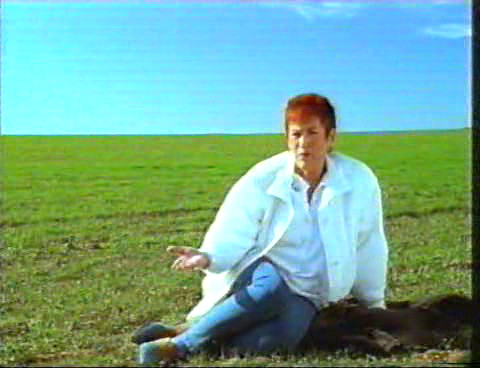

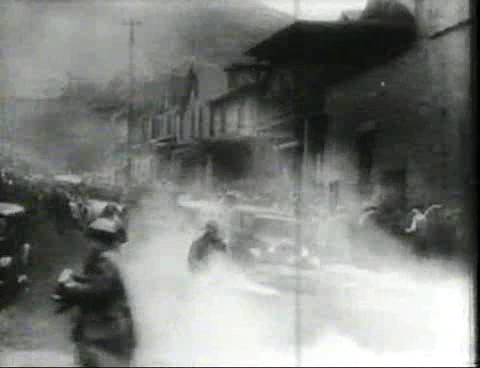

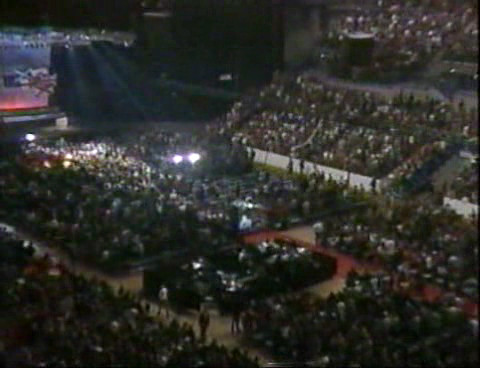
Share The Century of The Self by Adam Curtis via demonoid!
at 6:36 PM
Dusan Makavejev - W.R. - Misterije organizma [W.R. - Mysteries of the Organism] (1971)
Summary: Makavejev's most famous film is WR: Mysteries of the Organism (1968-1971), and while some critics, notably Robin Wood, have argued that here the director's collage approach has finally gone out of control, the match of subject and director is ideal. The "WR" of the title refers to Wilhelm Reich, the controversial psychologist and philosopher whose "orgone box" alleged to cure cancer and other diseases landed him in a Pennsylvania prison, where he died in 1958.
Reich was, like Makavejev, an unapologetic liberationist, disgusted by both communism's hatred of creativity and capitalism's idolatry of consumerism. For both men, to quote Reich as quoted in the film, "Fascism is the frenzy of sexual cripples." Makavejev's paean to Reich is a kaleidoscope of constructs and effects, a wild m?lange that's variously a heartfelt tribute to a martyred pioneer, a screed against war and more personal brutalities, a satire of communism, and a plea for liberation on all levels. Shot in both Yugoslavia and the United States, WR includes a rich sampling of Reich quotes, a bit of footage of Reich and his wife, interviews with family members, devotees, and Maine locals who knew him as an okay guy who was slightly eccentric. His influence is indicated in voiceover quotes from both Reich and Makavejev ("Comrade-lovers, for your health's sake, fuck freely!"), scenes of a bioenergetic workshop in New York, a penis plaster cast being made, and a rare sighting of one of the (then) "ten or fifteen orgone boxes left in the country."
The film is a crazy quilt of visual quotes, ranging from the ironic hagiography of an old Russian melodrama about Stalin to the grisly horror of Nazi medical footage of electroshock therapy. WR?s weapons against these atrocities are whimsy, satire, and sex. He skewers war in the person of poet Tuli Kupferberg, seen prancing through the streets of New York in a comic costume holding a fake gun and quietly rattling passersby. Most impressive in this regard is a recurring story of Party faithful Radmilovic (Zoran Radmilovic), Reich enthusiast Milena (Mileana Dravic), and her roommate Jagoda (Jagoda Kaloper). Hilarious indeed are Milena's arguments with a canny old lady, who dishes the Reichian ideal as practiced by a couple nearby: "To me it's just a fuckfest!" When her boyfriend Radmilovic upbraids her thus, "Now that you've passed a Party course, you snub intimate proletarian friends!" she replies in perfect communist-speak: "That's a slanderous lie, you irresponsible element!"
In a brilliant stroke, when a perfect orgasm leads to Milena's beheading, she continues to dispense Reichian homilies from the little white pan in which her head sits. Not surprisingly, WR had its share of censorship problems; in fact, Makavejev left the former Yugoslavia in 1971 when the film was banned there.(from Bright Lights Film Journal)
Screenshots:




File info:
File ==> Size : 700 MB (or 717,304 KB or 734,519,296 bytes)
Source : VHS
Ripper : Unknown
Language: Serbo-Croatian
Subtitle : Hardcoded English Subs
Video ==> Frame Size : 640x480
Bitrate : 1028 kb/s
FPS : 23.976
QF : 0.140 bits/pixel
FourCC Code : [DX50] DivX 5.x Codec
Audio ==> Sampling Rate : 48000 Hz
Bitrate : 131 kb/s (65/ch, stereo) VBR LAME3.90
Channels : 2 (Stereo)
Audio Tag : 0x0055(MP3) ID'd as MPEG-1 Layer 3
Share Mysteries of the Organism via demonoid(new link, it was already at demonoid)!
at 1:56 PM
Matt McCormick - The Subconscious Art of Graffiti Removal (2002)
Wednesday, March 28, 2007
Graffiti removal: the act of removing tags and graffiti by painting over them.
Subconscious art: a product of artistic merit that was created without conscious artistic intentions.
It is no coincidence that funding for “anti-graffiti” campaigns often outweighs funding for the arts. Graffiti removal has subverted the common obstacles blocking creative expression and become one of the more intriguing and important art movements of our time. Emerging from the human psyche and showing characteristics of abstract expressionism, minimalism and Russian constructivism, graffiti removal has secured its place in the history of modern art while being created by artists who are unconscious of their artistic achievements.
Production of The Subconscious Art of Graffiti Removal took approximately six months and was completed in January 2001. Shooting was done primarily in Portland, Oregon and other pacific northwest locations. The piece was shot in both 16mm film and digital video, and post-production was completed with desktop editing and animation software.






Awards and screening summary:
* The Seattle Art Museum- 03 The Sundance Flm Festival- 02
* The San Francisco Int Film Festival- 02 *grand prize for best short film
* The Ann Arbor Film Festival- 02 *best short film/life work award
* The New York Underground Film Festival- 02
* South X Southwest Film Festival- 02
* The New York Film Society at the Lincoln Center- 02
* ResFest- 02
* The Portland Art Museum/Northwest Film Center- ‘02
* Black Maria Film Festival- 01 *first place
* Viper Festival (Basil Switzerland)-01
* Media City Film Festival (Windsor Canada)- 01 *grand prize/best of fest
* Cinematexas Film Festival (Austin Texas)- 01 *audience choice award
* Taos Talking Picture Festival- 01
* Microcine Festival (Baltimore)- 01 *best documentary award
* The Chicago Underground Film Festival- 01
Additional honors:
* ‘Top 10 of 2002’ - Art Forum magazine
* ‘Top 10 Avant Garde Films of the Year’ - The Village Voice
* Regularly aired on The Sundance Channel.
Share this brilliant work via demonoid!
at 11:31 PM
Ben Lewis - Baader-Meinhof: In Love with Terror (2002)
BAADER-MEINHOF: IN LOVE WITH TERROR
How do you start a revolution in one of the world's richest, modern democracies? The Baader-Meinhof group, aka the Red Army Faction attempted to in 1970s West Germany with bombings, kidnaps and murders.
Ben Lewis' stylish film provides a unique insight into the notorious terrorist group and includes interviews with former RAF members and leaders of the West German government.
DIRECTOR INTERVIEW
BBC Four: What was the attraction of the Baader-Meinhof Gang at the time?
Ben Lewis: Guilt. I think young Germans were very guilty about the past and Baader-Meinhof offered them an attractive and very simple way to absolve themselves of that guilt. When we say attractive, we don't mean they had a lot of supporters, we mean there were a lot of people who were quite attracted by them.
There were only a very small number of people doing these attacks and sheltering them. But a lot of school children thought they were cool. They wore leather jackets and were full of sexy girls and were run by a sexy guy. This was the German answer to the Rolling Stones. Typically, Germans couldn't come up with the Rolling Stones because they have to be very serious about things; so they came up with a terrorist group rather than a rock group.
BBC Four: Where did the Baader-Meinhof Gang get their influences from?
Ben Lewis: Mao and a few South American guerrilla leaders. In a way the most important thing about the Baader-Meinhof Gang is that they read the guerrilla theories of Che Guevara and Carlos Marighella and decided to translate it to Western Germany. Let's translate a manual for warfare in one of the world's poorest countries to a manual warfare in one of the world's richest. And a lot got lost in the translation.
BBC Four: Did you detect any remorse or regret in any of the surviving members you interviewed?
Ben Lewis: Not really. One guy, Horst Mahler, is now a lawyer for the German NPD, which is a far-right, latter-day Nazi Party. So he obviously thinks it was a bit of a cock-up. But the rest of them, they're against violence now. Not because they think it isn't justified against the imperial-capitalist conspiracy of America against the rest of the world, but that the forces of imperialism are too strong to be overcome. They have recanted. The trouble is, once you ask them about their political beliefs it's quite clear that logically most would support violence. The theoretical framework is still there for most of the people I talked to.
BBC Four: Do you think they've had lasting impact on Germany?
Ben Lewis: I don't. I think it was a total dead end. The German Left in the 1960s was a big, heterogeneous and colourful force. Out of that you got the Greens and the anti-nuclear movement. These things had a tremendous impact on German society. The Baader-Meinhof Gang was a sideshow really. I think they did an enormous amount of damage to the Left.









Horst Mahler - contemporary fascist and ex RAF founder.
Share this via demonoid(if you do not have a user at demonoid, write your e-mail as a comment and i will invite you as soon as possible).
at 11:15 PM
Amon Tobin - Foley Room Bonus DVD (2007)
Tuesday, March 27, 2007
Summary
Genius of noise manipulation and uncompromising musical auteur, Amon Tobin has made, “Foley Room,” his most conceptually satisfying and beautiful album to date. Created using found sounds from tigers roaring to cats eating rats, from wasps to falling chickpeas, kitchen utensils to motorbikes to water dripping from a tap. Added to this were the sounds of musicians like the Kronos Quartet, Stefan Schneider and Sarah Pagé. He then took this wealth of source material and twisted it round into the haunting, muscular music you can hear throughout this remarkable album. Unique and compelling, “Foley Room” is set to stand out even amongst the consistently high quality of Tobin’s other output.
Biography
Somewhere back in the mid-90's a fresh faced Brazilian ex-pat living in the UK decided he was going to put down his harmonica, pick up a sampler, and name himself after a Stephen King novel. The resulting album, Cujo's 'Adventures In Foam' (released on Ninebar records, later reissued on Ninja Tune) signaled Amon Tobin's entry into the world of music. Well actually there's a pre-Cujo project also, but everybody knows not to talk about it... but if you get Amon really drunk... actually no, even then he won't play it for you.
Immediately upon hearing this record, the powers that be at Ninja Tune signed him up to record as Amon Tobin, and he quickly went to work on his debut 'Bricolage'. If you'll recall, these were the 'trip-hop' years for electronic music, where any clown with a sampler and a collection of Blue Note records could knock off some half-baked boutique hotel background music. But 'Bricolage' shone above all that. Although employing a
marriage of jazz and beats, it stretched it further by bringing in elements of bossa-nova, batucada, and jungle, and combining it with a sense of song-writing that elevated it above the standards of that aforementioned scene. I mean hell, it has a song on it which was inspired by Amon taking a piss on his neighbors bike after some domestic living dispute (‘A Day In My Garden’)...this was clearly no good vibes jazzy beats guy Ninja had signed.
Next up came 'Permutation'. Although stylistically a logical follow up to 'Bricolage', it was also on this album where things starting taking a noticeable turn to a much darker output. In fact you can actually trace Amon’s career based on coffee shop & dinner party accessibility...and let's just say that this record signaled the end of anyone being able to use Amon records as background music.
Call it end of millennium tension, but while the rest of us were out stockpiling food for the 2000 apocalypse, Amon was channeling all that into his third release 'Supermodified'. Treating it like if this was the end of the human race as we knew it and computers would never
work again (or god forbid, if we were to be ruled by apes), than damn if he wasn't going make this banger before the lights went out. The record was an experiment in sound. Marking the point where Amon become more and more obsessed with unheard but felt bass frequencies, and where he allowed
a few collaborators into the mix (mainly Chris Morris of Brass Eye & Blue Jam fame, and Montreal beatboxer Quadraceptor). The record where the bossa-nova/jazz Amon Tobin was for the most part laid to rest and the dark/electronic/soundtrack Amon Tobin came into form.
In 2002, Amon decided to relocate to Montreal. As Ninja Tune's North American headquarters is based there he'd spent a lot of time soaking in the culture and summer sunshine of the city, never once thinking that he'd never actually visited during the winter... So somewhere around the time he felt the sensation of his nose hairs freezing for the first time, he settled into his new studio armed with a fresh set-up and an A La Carte Express menu by his side (Montreal's bible of food for shut-ins) to put the finishing touches on 'Out From Out Where'. This was the logical conclusion of what the previous records had hinted at. It was a cohesive and banging record, but one with no obvious reference points. It just sounded like Amon Tobin, and Amon (more so than a lot of artists) can actually say his sound is very much recognizable as his own. The accompanying tour for this album also resulted in Amon's entry into the Solid Steel mix series, with a tough ass Final Scratch DJ set captured in Australia released in June 04.
In 2004 video game developers Ubisoft decided to approach Amon to compose all the music for the 3rd installment of their enormously popular Splinter Cell series. Seeing as he wasn’t able to get past the second level of Splinter Cell 1, he thought that making the soundtrack would clearly be an easier way to interact with this game. This was a chance for Amon to experiment with different ways of composing and to finally realize a teenage ambition (although the soundtrack in no way reflected his love for Galaga…even though that was a hot game). Also composing a proper soundtrack allowed him to be a little more progressively excessive, with the inclusion of extended string arrangements and over the top Hammond organ solos woven into his sounds. Like Italian prog sensation Goblin composing for a Bond film would be an apt comparison for this work. A love of soundtracks has always been a key influence in his work, and it clearly showed here. The game was released in March 05. An accompanying soundtrack on Ninja Tune was released soon after on CD/LP/ and 5.1 DVD-Audio. The surround element was pushed even further on the handful of live dates he did for this release. The thing about an Amon show is that you could always escape the immense volume by going to the back of the room... in surround there is no escape folks.
After his foray into the video game world Amon stepped back and took a hard look at what the next record would be comprised off. Having made several albums from reconstructed vinyl sources it was time to look at what else could be pulled apart and reassembled. The focus now has shifted from the source material altogether and placed squarely on the manipulation of sound regardless of it's origin. Armed with a sound engineer (Vid Cousins) and a collection of microphones he set out to find source material in pretty much everyplace possible. Robotics, animals, insects, musicians, utensils, motorbikes, and about a thousand other things that made interesting noises were all mic'ed and fashioned into the tracks that make up his new album 'Foley Room'. It should be noted that although the process was quite experimental that the record isn't an exercise in avant-garde music. Rather the end result is still pure Amon Tobin but pushed miles forward in sonics and melody due to the depth of source material. Also Amon isn't claiming to have invented the wheel here but rather is paying a certain hommage to a long history of musique-concrete composition, at the same time satisfying his love for pushing the envelope of his output and knowledge of the recording process. The process itself is documented on a short film/documentary that will be included with the CD & LP release of this record. Watch for an early single "Bloodstone" to be released on 12" and digital formats as a lead up early in 07, and the full album 'Foley Room' to drop in March 07.
Cover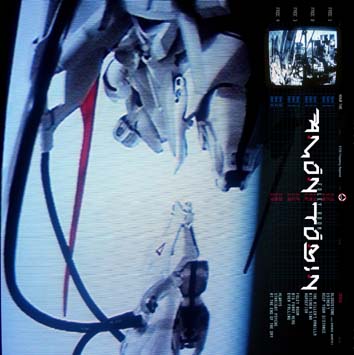
Screen Shots







Amon Tobin has written a few words about the fact that Foley Room has been leaked, read it here.
Share this dvd via demonoid, and if you want to, go buy the dvd/cd at dotshop.
File Info
G-Spot - Export:
File Name .............: ZEN 121-Amon Tobin - Foley Room-Bonus DVD (2007).avi
File Size (in bytes) ..: 229,298,294 bytes
Runtime (# of frames) .: 00:22:49 (41020 frames)
Video Codec ...........: DivX 4 (OpenDivX)
Frame Size ............: 720x480 () [=] [=1.500]
FPS ...................: 29.971
Video Bitrate .........: 2 kb/s
Bits per Pixel ........: 0.000 bpp
B-VOP, N-VOP, QPel, GMC ......: []...[]...[]...[]
Audio Codec ...........: 0x0055(MP3, ISO) MPEG-1 Layer 3
Sample Rate ...........: 48000 Hz
Audio bitrate .........: 128 kb/s [2 channel(s)] CBR audio
Interleave ............: 33 ms
No. of audio streams ..: 1
at 2:16 PM
Alec Crichton, works from 2003 to 2005
Alec Crichton is a Köln based freelance designer, artist and writer. This torrent contains eight work's;
Lichtdifferenz(2005)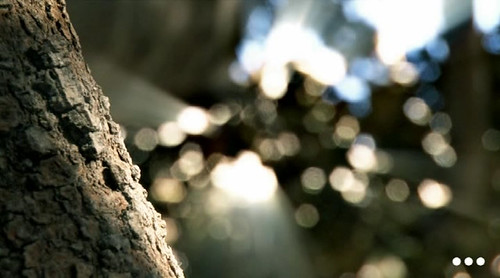

Schattenschieber(2005)

Frequenzfluss(2004)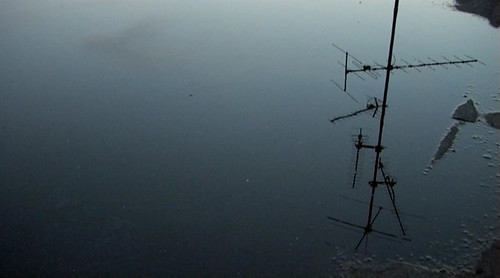
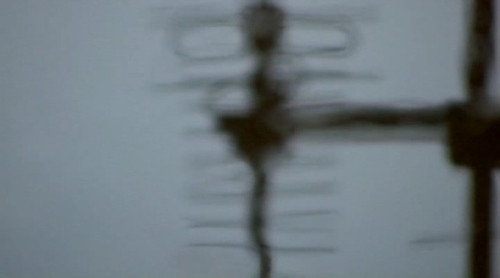
Mauenheim(2004)

Widerholung(2004)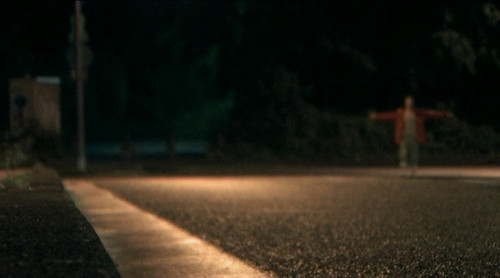
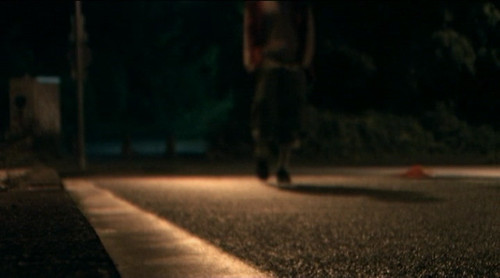
Wohnschimmer(2003)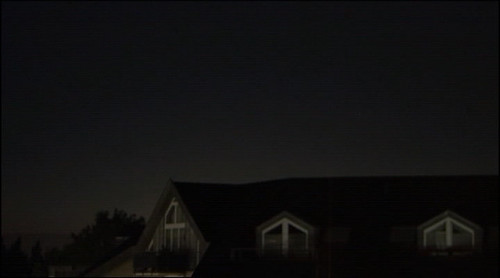

Zaunsein(2003)

Zeitfluss(2003)

Since i don't how to make multitracker torrents in azureus, you will have to share this via demonoid(now it works..)!
at 2:00 PM